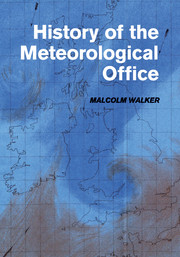Refine search
Actions for selected content:
10306 results in History of science: general interest
Part II
-
- Book:
- Aristotelianism in the First Century BCE
- Published online:
- 05 January 2012
- Print publication:
- 15 December 2011, pp 49-50
-
- Chapter
- Export citation
Part I
-
- Book:
- Aristotelianism in the First Century BCE
- Published online:
- 05 January 2012
- Print publication:
- 15 December 2011, pp 9-10
-
- Chapter
- Export citation
Index of names
-
- Book:
- Aristotelianism in the First Century BCE
- Published online:
- 05 January 2012
- Print publication:
- 15 December 2011, pp 220-221
-
- Chapter
- Export citation
Abbreviations
-
- Book:
- Aristotelianism in the First Century BCE
- Published online:
- 05 January 2012
- Print publication:
- 15 December 2011, pp x-xii
-
- Chapter
- Export citation
Reception
-
- Book:
- Aristotelianism in the First Century BCE
- Published online:
- 05 January 2012
- Print publication:
- 15 December 2011, pp 167-198
-
- Chapter
- Export citation
Introduction
-
- Book:
- Aristotelianism in the First Century BCE
- Published online:
- 05 January 2012
- Print publication:
- 15 December 2011, pp 1-8
-
- Chapter
- Export citation
General index
-
- Book:
- Aristotelianism in the First Century BCE
- Published online:
- 05 January 2012
- Print publication:
- 15 December 2011, pp 227-227
-
- Chapter
- Export citation
References
-
- Book:
- Aristotelianism in the First Century BCE
- Published online:
- 05 January 2012
- Print publication:
- 15 December 2011, pp 205-219
-
- Chapter
- Export citation
Xenarchus: the man and his work
-
- Book:
- Aristotelianism in the First Century BCE
- Published online:
- 05 January 2012
- Print publication:
- 15 December 2011, pp 11-48
-
- Chapter
- Export citation
Part III
-
- Book:
- Aristotelianism in the First Century BCE
- Published online:
- 05 January 2012
- Print publication:
- 15 December 2011, pp 165-166
-
- Chapter
- Export citation
Conclusion
-
- Book:
- Aristotelianism in the First Century BCE
- Published online:
- 05 January 2012
- Print publication:
- 15 December 2011, pp 199-204
-
- Chapter
- Export citation
Frontmatter
-
- Book:
- Aristotelianism in the First Century BCE
- Published online:
- 05 January 2012
- Print publication:
- 15 December 2011, pp i-vi
-
- Chapter
- Export citation

History of the Meteorological Office
-
- Published online:
- 05 December 2011
- Print publication:
- 14 November 2011
Institutions and innovation: experimental zoology and the creation of the British Journal of Experimental Biology and the Society for Experimental Biology
-
- Journal:
- The British Journal for the History of Science / Volume 46 / Issue 1 / March 2013
- Published online by Cambridge University Press:
- 02 December 2011, pp. 73-95
- Print publication:
- March 2013
-
- Article
- Export citation
Teaching natural history at the Museum of Vertebrate Zoology
-
- Journal:
- The British Journal for the History of Science / Volume 46 / Issue 1 / March 2013
- Published online by Cambridge University Press:
- 02 December 2011, pp. 97-121
- Print publication:
- March 2013
-
- Article
- Export citation
BJH volume 44 issue 4 Cover and Front matter
-
- Journal:
- The British Journal for the History of Science / Volume 44 / Issue 4 / December 2011
- Published online by Cambridge University Press:
- 05 December 2011, pp. f1-f2
- Print publication:
- December 2011
-
- Article
-
- You have access
- Export citation
Jeffrey R. Wigelsworth, Selling Science in the Age of Newton: Advertising and the Commoditization of Knowledge. Farnham: Ashgate, 2010. Pp. xiii+203. ISBN 978-1-4094-0075-2. £65.00 (hardback).
-
- Journal:
- The British Journal for the History of Science / Volume 44 / Issue 4 / December 2011
- Published online by Cambridge University Press:
- 05 December 2011, pp. 595-597
- Print publication:
- December 2011
-
- Article
- Export citation
Roy MacLeod, Archibald Liversidge, FRS: Imperial Science under the Southern Cross. Sydney: The Royal Society of New South Wales and Sydney University Press, 2009. Pp. xvii+637, illustrated. ISBN 978-1-920898-80-9. AU$59.95 (paperback).
-
- Journal:
- The British Journal for the History of Science / Volume 44 / Issue 4 / December 2011
- Published online by Cambridge University Press:
- 05 December 2011, pp. 610-611
- Print publication:
- December 2011
-
- Article
- Export citation
Henk W. De Regt, Sabina Leonelli and Kai Eigner (eds.), Scientific Understanding: Philosophical Perspectives. Pittsburgh: University of Pittsburgh Press, 2009. Pp. ix+352. ISBN 978-0-8229-4378-6. $65.00 (hardback).
-
- Journal:
- The British Journal for the History of Science / Volume 44 / Issue 4 / December 2011
- Published online by Cambridge University Press:
- 05 December 2011, pp. 578-580
- Print publication:
- December 2011
-
- Article
- Export citation
Index of authors
-
- Journal:
- The British Journal for the History of Science / Volume 44 / Issue 4 / December 2011
- Published online by Cambridge University Press:
- 05 December 2011, p. 623
- Print publication:
- December 2011
-
- Article
- Export citation
